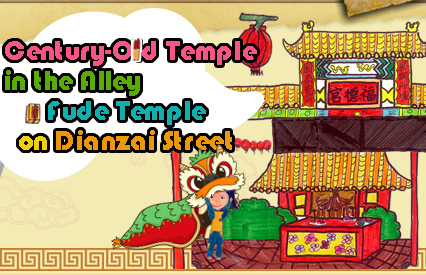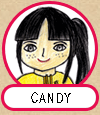 |
 |
 |
 |
 |
 |
 |
 |
 |
 |
 |
 |
|
Interview – Fude Temple on Dianzai Street Consultant
This was our first visit to Fude Temple on Dianzai Street. We interviewed Mr. Zhang Ruiming, consultant of the temple. He has provided us with valuable insights, and it seemed like he knew the history of the temple like the back of his hand. We learned about the history of the temple, as well as how much it is currently doing in charity work. It was really surprising to learn that a small temple located in the tiny alley of Yonghe is run by a management committee and a foundation. The transformation that the temple had undergone was indeed second to none.
Interview Log
About the templeQ: How many times has the temple been refurbished?A: Four years ago, there was a refurbishment project because some parts of the building were serious corroded. After I got here, the last major refurbishment that I know of was in 2008 when they redid the roof. However, one disappoint was the temple had failed to retain the old roof as a historic artifact. I think a temple is a religious and cultural center. It is our job to see the passing down of history and culture to future generations, and I deeply regret that we had failed to do that. The stone slab was erected yesterday, and that marked the completion of the temple’s four-year renovation project. Q: During refurbishment, were there any challenges that you faced? How did you overcome them?A: The roof of the temple used to be made of Cochin ware. With the Cochin ware industry in its dying phase, any temple that plans to refurbish can apply for subsidies from the government, and the Cochin ware would be preserved as historic artifact. Unfortunately, the temple did not retain its historic Cochin ware roof, as it might be sold by those who knew the true value of Cochin ware. Q: A lot of the deity statues are made of wood. Has the temple taken any precautions in preventing accidental fire?A: That is actually a problem faced by every temple. Temperature inside the temple is always high due to burning incense sticks. If we installed fire detectors, it would go off every day, so that’s not even an option for us. What we did was adding human monitoring. We do not allow burning incense sticks on the second floor to avert the burners from catching fire when there is an excess amount of incense sticks inside the burner. We have also placed all incense burners outdoors because space is really limited. Q: What makes Fude Temple on Dianzai Street different from other Earth God temples?A: The greatest different lies in Fude Temple on Dianzai Street has a huge follower base. When I got there, there were about 7,000 perpetual lights at the temple. Now, there are about 27,000 perpetual lights. Another special part about the temple is that people are free to walk in and chat, not many temples allow that. If people ask why does Fude Temple on Dianzai Street have so many followers, it is primarily because it is located in Yonghe, a major suburb of New Taipei City. The temple is not well-funded, but it is always generous in giving back to the community with donations and charity works. Temple related workQ: A lot of temples are actively preserving historic artifacts and increase interaction with other temples. What has the temple done to promote itself? Any interactions? What’s the purpose of such interaction?A: It is very rare that a temple is able to preserve its historic artifact because there are lots of regulations and assessments to go through before the temple is certified as a historical monument. Some temples may preserve some historic artifacts and pictures, but the preservation of the temple’s unique identities is rarely seen. There are interactions amongst temples, but the level of interaction may differ from temple to temple. Formal visits by deities and temple staff outings are common ways for temples to interact with each other. Temple staff outings are organized every year, and there are no accompanying deity statues. The temple has been really busy with its refurbishment, so our staff outing has been postponed. Q: Whenever there is a major event, like neighborhood inspection tour, how long would it take to organize such an event?A: Most neighborhood inspection tours occur on the deity’s birthday. Like Earth God’s birthday is on the second of February on the lunar calendar. We had to start planning about three months earlier. Praying RelatedQ: What was the reason that attracted so many followers to Fude Temple on Dianzai Street?A: People doing business would come here on the second and sixteenth day of each month on the lunar calendar to pray for booming businesses. The elderly would come here on the first and fifteenth day of each month on the lunar calendar to pray for good health and safety. Q: How many times can a person ask the deities about things?A: The way for people to communicate with deities is through Poe divination. One question is often asked once only. Q: Have you thought about placing a brief description about each deity so people may learn more about them?A: Yes, and we have the descriptions on the lunar calendar booklet. We have Earth God and Earth God’s wife. There aren’t many temples that have Earth God’s wife as a resident deity. With the expansion of the temple, we gradually added Guanyu, Mazu, Cabinet Baoyi, and other deities. We will be updating information for praying order and descriptions of deities on the temple’s website as well. Q: A lot of worshippers have made donations to the temple. How are the donations managed and utilized?A: Sources of Income for the temple come from perpetual lights, offering rice, and donations. All the money would first go to the temple management. After accounting for all related expenses, such as personnel and paper money, the remainder would then go to the foundation for charity work. Charity RelatedQ: The temple is actively involved in taking care of the disadvantaged groups. How do you go about doing that? Do you have any specific groups in mind?A: Every year we donate NTD 300,000 and worked with Yonghe district office to help 62 communities with their senior group meal programs. Every year we have a winter relief program where the district office would send out surveys to temples, asking for us to support disadvantaged groups, such as low-income families, disabled families, or single families. We used to sign up to support 800 families. However, during last year’s winter relief, I recommended to the temple management that we could raise that number to 2,000. Every family will receive a red envelope and some supplies, and we have to budget about NTD 2,000,000 for the relief. Furthermore, there are some disadvantaged groups, such as Harmony Home Association, that we have been working with for a long time. Children there are mostly abandoned, and they couldn’t get a legal citizen status due to some legal issues. We had the opportunity to work with them by chance, and we have been supporting them ever since. Q: Are there any plans for charity works in the future?A: The temple management would definitely love to do more to help the community, but we also have to take our limited funding and manpower into consideration. That’s why we would like everyone to help us locate people who really need our help. It could be friends at your school or neighbors next door. Tell us about them, and we will do our best to help them through difficult times. Look Into the FutureQ: If there is more funding available in the future, will the temple do anything differently?A: It doesn’t matter how much funding the temple gets, I want the temple to be a local temple that spends every dollar it has on local people and charities. I am part of the society, and I received help when I was little. That’s why I want to do more than just donating money; I want to be part of an organization that promotes charity work and continues our cultural heritage. Q: The temple organized a hand puppet show once to show appreciation for the deities, but not many people turned out for the show. With the progress of time, do you have plans to organize different activities in the future?A: Based on my personal belief, I hope our funding to school clubs would provide a venue for students who play an instrument. We would invite them to perform, and that’s how we will protect our cultural heritage. Afterthoughts from the Interview
Source Text: The Wondrous Temple Expedition, Fude Temple on Dianzai Street Consultant │ |
 |
 |




